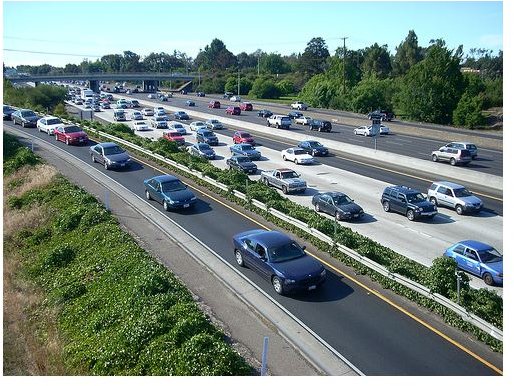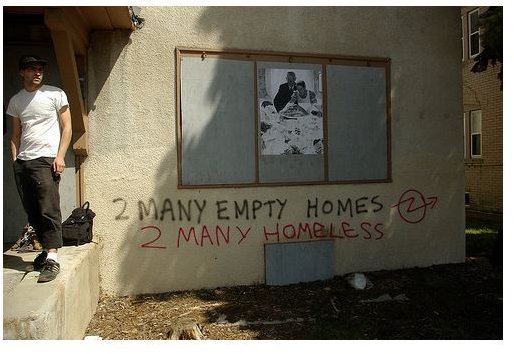How Important Is the Housing Market to the Economy?
Housing and the Economy
Decent shelter is a basic human need. An economy that cannot sustain a viable housing market that provides affordable shelter for all of its citizens is an economy in trouble.
In the past, the strength of the housing market fueled American job growth. By contrast, the continued depressed sales climate of the post housing bubble era has had a detrimental impact on employment. The ongoing foreclosure crisis has been matched by stubbornly high unemployment rates. The two are closely bound to one another, even beyond the obvious connection of job loss making it difficult or impossible for families and individuals to keep up with their mortgages.
The problem can be especially acute for young families who relocated far from the city center to find single-family detached houses they could afford. Many of these families have been unpleasantly surprised by the impact that paying for automobile maintenance, parking and gas, not to mention the time spent commuting to and from work, has had on the affordability of their homes and on their overall quality of life. Add a job loss to the picture, and the prospect of being literally stranded in one’s own home becomes a real possibility if the budget won’t stretch far enough to continue to use the car for anything but basic necessities, if that.
People who would be willing to relocate either locally or long distance for improved career prospects often cannot do so. If they own a home, they may be unable to sell, or may be trapped in an “underwater mortgage,” a house whose value has shrunk below the price they’re paying for it. There are also roadblocks to would-be buyers. In the economic environment that followed the collapse of the housing bubble, credit has tightened and remains restricted, especially for would-be buyers with marginal or poor credit or for those who cannot raise a 20 percent down payment.
Housing, Building and Real Estate

Building a new home or rental complex requires an army of workers, not only contractors and construction workers, but also carpet layers, plumbers, electricians and other building-related skilled workers. On average, the construction of each single family home accounts for three new jobs, $90,000 in federal, state and local tax revenue, $145,000 in wage income and $86,000 in net business income, according to David Crowe, Chief Economist at the National Association of Home Builders, quoted on the U.S. Building Digest website.
The collapse of the housing bubble resulted initially resulted in a glut of housing stock and a precipitous fall in housing prices. Prices have begun to recover, but in fits and starts. In October 2010, housing prices fell actually 1.3 percent, in 20 metropolitan areas nationwide, according to AOL News, quoting figures from the S&P/Case-Shiller home-price index. Despite the “correction” in home prices, demand remains weak. Although there has been some recovery, especially in the “starter” home market, it’s unlikely that demand or new home construction will ever return to the levels reached at the height of the housing boom, at least partially an affect of tight credit and continued weak job growth.
This is bad news for workers in the building trades, many of whom considered themselves recession proof, secure in the belief that there would always be a market for their work, because people would always need basic housing-related work done, such as roof repair or replacement plumbing.
What they didn’t count on was the protracted recession that forced families to put off essential work along with extravagant home improvement projects such as outfitting an entirely new kitchen, according to Mark Crovelli, a writer in the building trades.
No one understands how important the housing market is for a healthy economy better than those professionals who match properties with buyers. Real estate agents increasingly face the necessity of branching into related work such as property management or handling rental properties in order to survive professionally and financially. Like others in finance-related industries, real estate agents must maintain high credit ratings or risk being disqualified for future positions.
Housing, Transportation and Mobility

Housing and transportation relate to each other in ways that are both obvious and hidden. Transportation is the second largest household expense for most families, exceeded only by costs directly involved with housing. When the two expenses are added together, a threshold of 45 percent of total household income can be considered to be “affordable,” according to the H+T Affordability Index, developed by the Center for Neighborhood Technology. Many families spend far more than that – only 40 percent of all American communities are affordable to working American families under the H+T Affordability Index guidelines.
These dire figures are mitigated somewhat in compact, sustainable communities with ample access to public transportation, which is not the case in poor neighborhoods in many urban areas, where residents are stranded in areas lacking basic services such as grocery stores and banks. Well-paid jobs require skills many do not have. Those who are qualified must often navigate awkward commutes with multiple transfers, if the companies are accessible by public transportation at all.
In many communities, suburban sprawl results in commuting times measured in hours. This is by design. The suburbs were intended to be a haven from the ills of the city, including poverty. Wear and tear on a car and the headaches associated with long commutes were accepted as part of the trade off.
Any headache involved with driving to work becomes a chronic migraine when there is little or no money coming into the household due to job loss. Not only do many suburbs have little or no public transportation, safety net programs are often scant or non existent. Moreover, more than one-third of nonprofit agencies have cut staff in recent years due to reduced grant funding; 20 percent have cut services. At the same time, suburban poverty rates increased 37.4 percent between 2000 and 2010, to 13.7 million, contrasted with 12.1 million poor people living in cities, according to The Economist, quoting reports from the Brookings Institution.
Moreover, many suburban residents, as well as homeowners nationwide, are often hampered by moving because they are stuck with houses they cannot sell or which are worth less than the mortgages they are carrying. The problem is compounded because areas with declining housing market value are often also plagued with high unemployment rates, according to The Economist.
The housing slump and lack of job opportunity both contributed in a nationwide decline in mobility to 35.2 million between March 2007 and March 2008. This represents a figure lower than at any time since 1962, when 120 million fewer people lived in the United States, according to The New York Times. If the trend continues, the result could be a structural shift in the employment picture that prevents workers from relocating to areas with plentiful jobs where they can fully utilize their skills, leading to an increase in chronic unemployment and underemployment, according to the Federal Reserve Bank of Atlanta.
Foreclosures, Underwater Mortgages and Tent Cities

As of 2011, foreclosure rates were beginning to show a downward trend, reaching a 36-month low in February 2011 of some 225,101 U.S. properties. This figure represented a 14 percent decrease from January 2011 and a year on year decrease of 27 percent from February 2010, according to RealityTrac. Nonetheless, 1 of every 577 housing units in the United States is involved in some stage of foreclosure. Many foreclosures are the result of underwater mortgages. In 2009, nearly 23 percent of homeowners owed more on their mortgages than their homes were worth, according to CNN Money.
Underwater mortgages illustrate how important the housing market is to the economy. Homeowners trapped by underwater mortgages often find it impossible to refinance their homes and are more prone to foreclosure. Even homeowners who would otherwise be in the market to trade their present homes for larger living spaces are often tied down by underwater mortgages. In 2009, the percentage of move-up buyers dropped from 60 percent to 53 percent of the market, according to USA Today, quoting figures from the National Association of Realtors. Without move-up home buyers, the oversupply of larger, more expensive homes will continue to drive down home prices across the board, further slowing the recovery of the housing market.
Some homeowners stuck with underwater mortgages who are unable or unwilling to sell their homes through a short sale have decided to solve their dilemma through a strategic default on their mortgages – simply walking away, even when they can afford to continue making payments. In 2008, 17 percent of all mortgage defaults were strategic, according to NPR, quoting figures by Experian-Oliver Wyman. Homeowners who decide to undergo a strategic default are often guided through the process by companies such as YouWalkAway.com.
At the other extreme are people at the very end of their financial rope – pushed out by foreclosures into homelessness. Tent cities began proliferating around urban areas along with the increase in foreclosures. These modern-day Hoovervilles are increasingly tolerated by cities hard hit by the housing crisis and high unemployment. With shelter beds at a premium before the recession began, many cities see no other way to absorb growing numbers of newly-homeless households, according to the Wall Street Journal.
This is the reality of how the housing bubble has affected the economy. Time will tell whether the dropping prices will encourage more buyers and more growth in this important industry, setting us back on the road to recovery.
References
- Stephanie Armour. Underwater Mortgages Halt Some Move-Up Buyers, in USA Today, retrieved at https://www.usatoday.com/money/economy/housing/2010-02-10-moveup10_CV_N.htm
- BBC News: Tent City Highlights US Homes Crisis, retrieved at https://news.bbc.co.uk/2/hi/americas/7297093.stm
- Business Insider: Why Housing Starts And Unemployment Remain Mired In A Circular Trap, retrieved at https://www.businessinsider.com/why-housing-starts-and-unemployment-remain-mired-in-a-circular-trap-2010-6
- Center for Neighborhood Technology. H+T Affordability Index Executive Summary, retrieved at https://www.cnt.org/news/media/H+T-Index-Executive-Summary1.pdf
- Mark R. Crovelli. The Housing Recession and the Building Trades: Unemployment, Misery and the Fed, in LewRockwell.com, retrieved at https://www.lewrockwell.com/crovelli/crovelli11.html
- The Economist: Bad Circulation – There Is More to America’s Stubbornly High Unemployment Rate Than Just Weak Demand, retrieved at https://www.economist.com/node/16889105#footnote1
- The Economist: Poverty in the Suburbs – Mortgage or Food, retrieved at https://www.economist.com/node/17257857
- Jane Genova. Housing Market Slip Likely to Affect Job Searchers, in AOL News, retrieved at https://jobs.aol.com/articles/2010/12/30/housing-market-slip-likely-to-affect-job-searchers/
- HousingCrisis.com: Capitol Hill’s Patron Saint of Housing, retrieved at https://www.housingcrisis.com/tag/unemployment/
- Tamara Keith. Walking Away From The House She Can Afford, in NPR, retrieved at https://www.npr.org/templates/story/story.php?storyId=121907594
- Jennifer Levitz. Cities Tolerate Homeless Camps, in the Wall Street Journal, retrieved at https://online.wsj.com/article/SB124994409537920819.html
- Julianne Pepitone. 1 in 4 Mortgages “Underwater,” in CNN Money, retrieved at https://money.cnn.com/2009/11/24/real_estate/mortgages_underwater/index.htm
- RealtyTrac: Foreclosures Frozen in February (2011), retrieved at https://www.realtytrac.com/content/press-releases/foreclosure-activity-decreases-14-percent-in-february-6420
- Sam Roberts.Slump Creates Lack of Mobility for Americans, in The New York Times, retrieved at https://www.nytimes.com/2009/04/23/us/23census.html?_r=1
- Gregory D. Squires and Charis E. Kubrin. Privileged Places: Race, Opportunity and Uneven Development in Urban America, in Shelterforce Online, retrieved at https://www.nhi.org/online/issues/147/privilegedplaces.html
- Gary Tapp. Is Structural Unemployment on the Rise?, in Federal Reserve Bank of Atlanta Education & Consumer Resources, retrieved at https://www.frbatlanta.org/pubs/extracredit/10Fall_structural_unemployment.cfm
- U.S. Building Digest: Health of Housing Market Hinges on Access to Credit, Builders Tell Congress, retrieved at https://www.usbuildingdigest.com/news/health-of-housing-market-hinges-on-access-to-credit-builders-tell-congress
Photo Credits:
- Flickr. Foreclosure, Financial Crisis and Homelessness, in Andrew Ciscel’s photostream
- Flickr. Home Foreclosure in Greeley, Colorado, in david_shankbone’s photostream
- Flickr. New House Construction With Romantic Florishes and Details, Curved Windows, Dormers, Eagle Wind Vane, North Matthews Beach, Sand Point Way Uplands, Seattle, Washington, USA, in Wonderlane’s photostream
- Flickr. Silicon Valley Highway 101 Traffic Hell, in richardmasoner’s photostream
